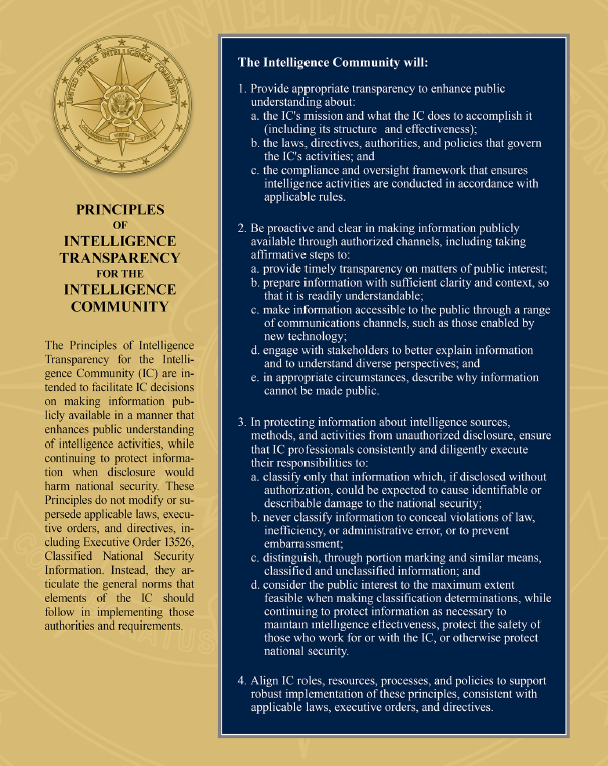 The Intelligence Community signature emblem was announced by former Director of National Intelligence Mike McConnell November 26, 2008. It was designed by the U.S. Army’s Institute of Heraldry, and approved by the Intelligence Community Executive Committee.
The Intelligence Community signature emblem was announced by former Director of National Intelligence Mike McConnell November 26, 2008. It was designed by the U.S. Army’s Institute of Heraldry, and approved by the Intelligence Community Executive Committee.
The compass rose symbolizes the clandestine nature of intelligence operations and their global reach. The design incorporates a polestar, one of the traditional design elements associated with intelligence; the globe represents the area of operations. The ODNI seal in the center signifies ODNI’s leadership role within the IC.
The eight points of the polestar represent the six departments and two independent agencies of the Intelligence Community. They are combined with the 15 stars around the circumference represent the elements of other agencies that are also part of the Intelligence Community.
The banner draped over the lower portion of the compass rose is inscribed with the three core values of the Intelligence Community – Courage, Collaboration, and Commitment.
Download the United States Intelligence Community Seal
- .eps (2.5mb)
- .png (846kb)
Intelligence Community (IC) Policy supports integration across the Community and aligns to executive direction, legislative requirements, DNI strategic initiatives, and IC priorities. Intelligence Community Directive 101, IC Policy System provides the framework for IC Policy, which includes IC Directives and subordinate IC Policy Guidance.
As circumstances require, the Policy Division works closely with ODNI Components and the IC elements to review, revise, and rescind policies to ensure that IC Policy is relevant and current.
Consistent with the Principles of Intelligence Transparency for the IC, this list of active, unclassified policies is intended to foster public understanding about the policies that govern the IC’s activities.
IC Policy LIBRARY
- Intelligence Community Directives (ICDs)
- Intelligence Community Policy Guidance (ICPG)
- Intelligence Community Policy Memorandums (ICPMs)
- Intelligence Community Policy Framework for Commercially Available Information
OTHER
- IC Legal Reference Book
- ICS 500-35 Implementing Frameworks Governing Appropriate Use of IC Online Collaboration Platforms
- FISA Amendments Act of 2008 (FAA)
- Records Control Schedules
NATIONAL INTELLIGENCE COUNCIL PRODUCTS
The NIC supports the DNI in his role as head of the IC by providing senior policymakers with the views of the entire IC and serving as a bridge between the intelligence and policy communities. Among the NIC’s primary products are the National Intelligence Estimates (NIEs) - the IC’s most authoritative written assessments on national security issues. The NIC also reaches out to nongovernmental experts in academia and the private sector to broaden the IC’s knowledge and perspectives, and serving as the IC “think tank.”
In 2015, the Principles of Intelligence Transparency for the IC and the Transparency Implementation Plan were developed to institutionalize transparency; at the same time, the ODNI Civil Liberties and Privacy Office was renamed the Office of Civil Liberties, Privacy, and Transparency (CLPT). The overall goal is to make appropriate and responsible transparency more coordinated, credible, understandable, and sustainable.
The Principles of Intelligence Transparency for the Intelligence Community are intended to facilitate IC decisions on making information publicly available in a manner that enhances public understanding of intelligence activities, while continuing to protect information when disclosure would harm national security.
These Principles do not modify or supersede applicable laws, executive orders, and directives, including Executive Order 13526, Classified National Security Information. Instead, they articulate the general norms that elements of the IC should follow in implementing those authorities and requirements.
The Office of the Director of National Intelligence continues to lead an IC-wide effort to implement the Principles of Intelligence Transparency for the IC. Those principles call on the IC to be proactive and strategic in enhancing public understanding of the IC’s mission, how the IC accomplishes that mission, and the IC’s framework of rules, compliance, and oversight.
The IC is, through the recently-chartered Intelligence Transparency Council, executing a range of transparency initiatives under the Intelligence Transparency Plan.
The Intelligence Community Will:
Provide appropriate transparency to enhance public understanding about:
- The IC's mission and what the IC does to accomplish it (including its structure and effectiveness);
- The laws, directives, authorities, and policies that govern the IC's activities; and
- The compliance and oversight framework that ensures intelligence activities are conducted in accordance with applicable rules.
Be proactive and clear in making information publicly available through authorized channels, including affirmative steps to:
- Provide timely transparency on matters of public interest;
- Prepare information with sufficient clarity and context, so that it is readily understandable;
- Make information accessible to the public through a range of communications channels, such as those enabled by new technology;
- Engage with stakeholders to better explain information and to understand diverse perspectives; and
- In appropriate circumstances, describe why information cannot be made public.
In protecting information about intelligence sources, methods, and activities from unauthorized disclosure, ensure that IC professionals consistently and diligently execute their responsibilities to:
- Classify only that information which, if disclosed without authorization, could be expected to cause identifiable or describable damage to the national security;
- Never classify information to conceal violations of law, inefficiency, or administrative error, or to prevent embarrassment;
- Distinguish, through portion marking and similar means, classified and unclassified information; and
- Consider the public interest to the maximum extent feasible when making classification determinations, while continuing to protect information as necessary to maintain intelligence effectiveness, protect the safety of those who work for or with the IC, or otherwise protect national security.
Align IC roles, resources, processes, and policies to support robust implementation of these principles, consistent with applicable laws, executive orders, and directives.
The U.S. Intelligence Community is composed of the following 18 organizations:
- Two independent agencies—the Office of the Director of National Intelligence (ODNI) and the Central Intelligence Agency (CIA);
- Nine Department of Defense elements—the Defense Intelligence Agency (DIA), the National Security Agency (NSA), the National Geospatial- Intelligence Agency (NGA), the National Reconnaissance Office (NRO), and intelligence elements of the five DoD services; the Army, Navy, Marine Corps, Air Force, and Space Force.
- Seven elements of other departments and agencies—the Department of Energy’s Office of Intelligence and Counter-Intelligence; the Department of Homeland Security’s Office of Intelligence and Analysis and U.S. Coast Guard Intelligence; the Department of Justice’s Federal Bureau of Investigation and the Drug Enforcement Administration’s Office of National Security Intelligence; the Department of State’s Bureau of Intelligence and Research; and the Department of the Treasury’s Office of Intelligence and Analysis
- Air Force Intelligence
- Army Intelligence
- Central Intelligence Agency
- Coast Guard Intelligence
- Defense Intelligence Agency
- Department of Energy
- Department of Homeland Security
- Department of State
- Department of the Treasury
- Drug Enforcement Administration
- Federal Bureau of Investigation
- Marine Corps Intelligence
- National Geospatial-Intelligence Agency
- National Reconnaissance Office
- National Security Agency
- Navy Intelligence
- Space Force Intelligence
Air Force Intelligence
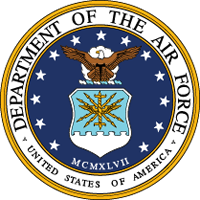
The U.S. Air Force Intelligence, Surveillance, and Reconnaissance (USAF ISR) Enterprise is America's leading provider of finished intelligence derived from airborne, space, and cyberspace sensors. The USAF ISR Enterprise delivers decision advantage in order to enable commanders to achieve kinetic and non-kinetic effects on targets anywhere on the globe in support of national, strategic, operational, and tactical requirements. The AF/A2 is the USAF's Senior Intelligence Officer and is responsible for functional management of all Air Force global integrated ISR capabilities, including oversight of planning, programming, and budgeting; developing and implementing the Air Force policies and guidance for managing Air Force global integrated ISR activities; and professional development, training, education, readiness, and deployment of 50,000 military and civilian United States Air Force intelligence personnel.
Army Intelligence
 U.S. Army Intelligence (G-2) is responsible for policy formulation, planning, programming, budgeting, management, staff supervision, evaluation, and oversight for intelligence activities for the Department of the Army. The G-2 is responsible for the overall coordination of the five major military intelligence (MI) disciplines within the Army: Imagery Intelligence, Signals Intelligence, Human Intelligence, Measurement and Signature Intelligence, and Counterintelligence and Security Countermeasures.
U.S. Army Intelligence (G-2) is responsible for policy formulation, planning, programming, budgeting, management, staff supervision, evaluation, and oversight for intelligence activities for the Department of the Army. The G-2 is responsible for the overall coordination of the five major military intelligence (MI) disciplines within the Army: Imagery Intelligence, Signals Intelligence, Human Intelligence, Measurement and Signature Intelligence, and Counterintelligence and Security Countermeasures.
Central Intelligence Agency
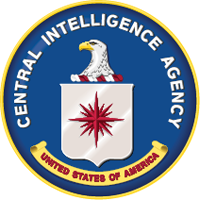 The Central Intelligence Agency (CIA) is responsible for providing national security intelligence to senior U.S. policymakers. The CIA director is nominated by the president and confirmed by the Senate. The director manages the operations, personnel, and budget of the CIA and acts as the National Human Source Intelligence manager. The CIA is separated into seven basic components: Directorate of Analysis, Directorate of Operations, Directorate of Science and Technology, Directorate of Support, Directorate of Digital Innovation, Mission Centers, and Offices of the Director. They carry out “the intelligence cycle,” the process of collecting, analyzing, and disseminating intelligence information to top U.S. government officials.
The Central Intelligence Agency (CIA) is responsible for providing national security intelligence to senior U.S. policymakers. The CIA director is nominated by the president and confirmed by the Senate. The director manages the operations, personnel, and budget of the CIA and acts as the National Human Source Intelligence manager. The CIA is separated into seven basic components: Directorate of Analysis, Directorate of Operations, Directorate of Science and Technology, Directorate of Support, Directorate of Digital Innovation, Mission Centers, and Offices of the Director. They carry out “the intelligence cycle,” the process of collecting, analyzing, and disseminating intelligence information to top U.S. government officials.
Coast Guard Intelligence
 The Coast Guard's broad responsibilities include protecting citizens from the sea (maritime safety), protecting America from threats delivered by the sea (maritime security), and protecting the sea itself (maritime stewardship). The Coast Guard's persistent presence in the maritime domain, due to its diverse mission sets and broad legal authorities, allows it to fill a unique niche within the Intelligence Community. Because of its unique access, emphasis, and expertise in the maritime domain Coast Guard Intelligence can collect and report intelligence that not only supports Coast Guard missions, but also supports national objectives. Coast Guard Intelligence strives to create decision advantage to advance U.S. interests by providing timely, actionable, and relevant intelligence to shape Coast Guard operations, planning, and decision-making, and to support national and homeland security intelligence requirements.
The Coast Guard's broad responsibilities include protecting citizens from the sea (maritime safety), protecting America from threats delivered by the sea (maritime security), and protecting the sea itself (maritime stewardship). The Coast Guard's persistent presence in the maritime domain, due to its diverse mission sets and broad legal authorities, allows it to fill a unique niche within the Intelligence Community. Because of its unique access, emphasis, and expertise in the maritime domain Coast Guard Intelligence can collect and report intelligence that not only supports Coast Guard missions, but also supports national objectives. Coast Guard Intelligence strives to create decision advantage to advance U.S. interests by providing timely, actionable, and relevant intelligence to shape Coast Guard operations, planning, and decision-making, and to support national and homeland security intelligence requirements.
The Coast Guard became a member of the Intelligence Community Dec. 28, 2001.
Defense Intelligence Agency
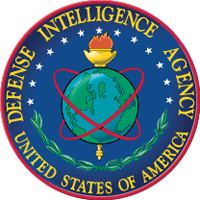 The Defense Intelligence Agency is a Department of Defense combat support agency. With more than 16,500 military and civilian employees worldwide, DIA is a major producer and manager of foreign military intelligence and provides military intelligence to warfighters, defense policymakers and force planners, in the DOD and the Intelligence Community, in support of U.S. military planning and operations and weapon systems acquisition. The DIA director serves as principal adviser to the secretary of defense and to the chairman of the Joint Chiefs of Staff on matters of military intelligence. The director also chairs the Military Intelligence Board, which coordinates activities of the defense intelligence community.
The Defense Intelligence Agency is a Department of Defense combat support agency. With more than 16,500 military and civilian employees worldwide, DIA is a major producer and manager of foreign military intelligence and provides military intelligence to warfighters, defense policymakers and force planners, in the DOD and the Intelligence Community, in support of U.S. military planning and operations and weapon systems acquisition. The DIA director serves as principal adviser to the secretary of defense and to the chairman of the Joint Chiefs of Staff on matters of military intelligence. The director also chairs the Military Intelligence Board, which coordinates activities of the defense intelligence community.
Department of Energy
 The U.S. Department of Energy's Office of Intelligence and Counterintelligence is responsible for the intelligence and counterintelligence activities throughout the DOE complex, including nearly 30 intelligence and counterintelligence offices nationwide. The mission is to protect, enable, and represent the vast scientific brain trust resident in DOE's laboratories and plants. The office protects vital national security information and technologies, representing intellectual property of incalculable value, and provides unmatched scientific and technical expertise to the U.S. government to respond to foreign intelligence, terrorist and cyber threats, to solve the hardest problems associated with U.S. energy security, and to address a wide range of other national security issues.
The U.S. Department of Energy's Office of Intelligence and Counterintelligence is responsible for the intelligence and counterintelligence activities throughout the DOE complex, including nearly 30 intelligence and counterintelligence offices nationwide. The mission is to protect, enable, and represent the vast scientific brain trust resident in DOE's laboratories and plants. The office protects vital national security information and technologies, representing intellectual property of incalculable value, and provides unmatched scientific and technical expertise to the U.S. government to respond to foreign intelligence, terrorist and cyber threats, to solve the hardest problems associated with U.S. energy security, and to address a wide range of other national security issues.
Department of Homeland Security
 The Office of Intelligence and Analysis is responsible for using information and intelligence from multiple sources to identify and assess current and future threats to the U.S. DHS Intelligence focuses on four strategic areas: Promote understanding of threats through intelligence analysis; Collect information and intelligence pertinent to homeland security; Share information necessary for action; and Manage intelligence for the homeland security enterprise. The Under Secretary for I&A also serves as DHS’ chief intelligence officer and is responsible to both the secretary of Homeland Security and the director of National Intelligence.
The Office of Intelligence and Analysis is responsible for using information and intelligence from multiple sources to identify and assess current and future threats to the U.S. DHS Intelligence focuses on four strategic areas: Promote understanding of threats through intelligence analysis; Collect information and intelligence pertinent to homeland security; Share information necessary for action; and Manage intelligence for the homeland security enterprise. The Under Secretary for I&A also serves as DHS’ chief intelligence officer and is responsible to both the secretary of Homeland Security and the director of National Intelligence.
Department of State
 The Bureau of Intelligence and Research provides the Secretary of State with timely, objective analysis of global developments as well as real-time insights from all-source intelligence. It serves as the focal point within the Department of State for all policy issues and activities involving the Intelligence Community. The INR Assistant Secretary reports directly to the Secretary of State and serves as the Secretary's principal adviser on all intelligence matters. INR's expert, independent foreign affairs analysts draw on all-source intelligence, diplomatic reporting, INR's public opinion polling, and interaction with U.S. and foreign scholars. Their strong regional and functional backgrounds allow them to respond rapidly to changing policy priorities and to provide early warning and in-depth analysis of events and trends that affect U.S. foreign policy and national security interests.
The Bureau of Intelligence and Research provides the Secretary of State with timely, objective analysis of global developments as well as real-time insights from all-source intelligence. It serves as the focal point within the Department of State for all policy issues and activities involving the Intelligence Community. The INR Assistant Secretary reports directly to the Secretary of State and serves as the Secretary's principal adviser on all intelligence matters. INR's expert, independent foreign affairs analysts draw on all-source intelligence, diplomatic reporting, INR's public opinion polling, and interaction with U.S. and foreign scholars. Their strong regional and functional backgrounds allow them to respond rapidly to changing policy priorities and to provide early warning and in-depth analysis of events and trends that affect U.S. foreign policy and national security interests.
Department of the Treasury
 The Office of Intelligence and Analysis was established by the Intelligence Authorization Act for fiscal 2004. OIA is responsible for the receipt, analysis, collation, and dissemination of foreign intelligence and foreign counterintelligence information related to the operation and responsibilities of the Department of the Treasury. OIA is a component of the U.S. Department of the Treasury’s Office of Terrorism and Financial Intelligence (TFI). TFI marshals the Department’s intelligence and enforcement functions with the twin aims of safeguarding the financial system against illicit use and combating rogue nations, terrorist facilitators, weapons of mass destruction proliferators, money launderers, drug kingpins, and other national security threats.
The Office of Intelligence and Analysis was established by the Intelligence Authorization Act for fiscal 2004. OIA is responsible for the receipt, analysis, collation, and dissemination of foreign intelligence and foreign counterintelligence information related to the operation and responsibilities of the Department of the Treasury. OIA is a component of the U.S. Department of the Treasury’s Office of Terrorism and Financial Intelligence (TFI). TFI marshals the Department’s intelligence and enforcement functions with the twin aims of safeguarding the financial system against illicit use and combating rogue nations, terrorist facilitators, weapons of mass destruction proliferators, money launderers, drug kingpins, and other national security threats.
Drug Enforcement Administration
 The Drug Enforcement Administration is responsible for enforcing the controlled substance laws and regulations of the United States. DEA’s Office of National Security Intelligence (ONSI) became a member of the IC in 2006. ONSI facilitates full and appropriate intelligence coordination and information sharing with other members of the U.S. Intelligence Community and homeland security elements. Its goal is to enhance the U.S.’s efforts to reduce the supply of drugs, protect national security, and combat global terrorism. DEA has 21 field divisions in the U.S. and more than 80 offices in more than 60 countries worldwide.
The Drug Enforcement Administration is responsible for enforcing the controlled substance laws and regulations of the United States. DEA’s Office of National Security Intelligence (ONSI) became a member of the IC in 2006. ONSI facilitates full and appropriate intelligence coordination and information sharing with other members of the U.S. Intelligence Community and homeland security elements. Its goal is to enhance the U.S.’s efforts to reduce the supply of drugs, protect national security, and combat global terrorism. DEA has 21 field divisions in the U.S. and more than 80 offices in more than 60 countries worldwide.
Federal Bureau of Investigation
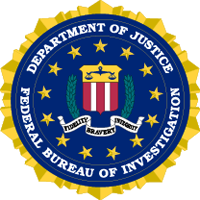 The FBI, as an intelligence and law enforcement agency, is responsible for understanding threats to our national security and penetrating national and transnational networks that have a desire and capability to harm the U.S. The Intelligence Branch is the strategic leader of the FBI’s Intelligence Program and drives collaboration to achieve the full integration of intelligence and operations, and it proactively engages with the Bureau’s partners across the intelligence and law enforcement communities. By overseeing intelligence policy and guidance, the Intelligence Branch ensures the FBI’s intelligence production remains objective and strikes the correct balance between strategic and tactical work.
The FBI, as an intelligence and law enforcement agency, is responsible for understanding threats to our national security and penetrating national and transnational networks that have a desire and capability to harm the U.S. The Intelligence Branch is the strategic leader of the FBI’s Intelligence Program and drives collaboration to achieve the full integration of intelligence and operations, and it proactively engages with the Bureau’s partners across the intelligence and law enforcement communities. By overseeing intelligence policy and guidance, the Intelligence Branch ensures the FBI’s intelligence production remains objective and strikes the correct balance between strategic and tactical work.
Joshua D. Skule is the executive assistant director of the Intelligence Branch.
Marine Corps Intelligence
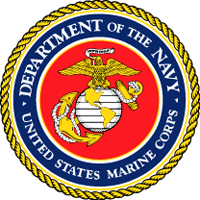 The U.S. Marine Corps produces tactical and operational intelligence for battlefield support. Its IC component is comprised of all intelligence professionals in the Marine Corps responsible for policy, plans, programming, budgets, and staff supervision of intelligence and supporting activities within the USMC. The department supports the commandant of the Marine Corps in his role as a member of the Joint Chiefs of Staff, represents the service in Joint and Intelligence Community matters, and exercises supervision over the Marine Corps Intelligence Activity. The department has service staff responsibility for geospatial intelligence, advanced geospatial intelligence, signals intelligence, human intelligence, counterintelligence, and ensures there is a single synchronized strategy for the development of the Marine Corps Intelligence, Surveillance, and Reconnaissance Enterprise. The Marine Corps' director of intelligence is the commandant's principal intelligence staff officer and the functional manager for intelligence, counterintelligence, and cryptologic matters.
The U.S. Marine Corps produces tactical and operational intelligence for battlefield support. Its IC component is comprised of all intelligence professionals in the Marine Corps responsible for policy, plans, programming, budgets, and staff supervision of intelligence and supporting activities within the USMC. The department supports the commandant of the Marine Corps in his role as a member of the Joint Chiefs of Staff, represents the service in Joint and Intelligence Community matters, and exercises supervision over the Marine Corps Intelligence Activity. The department has service staff responsibility for geospatial intelligence, advanced geospatial intelligence, signals intelligence, human intelligence, counterintelligence, and ensures there is a single synchronized strategy for the development of the Marine Corps Intelligence, Surveillance, and Reconnaissance Enterprise. The Marine Corps' director of intelligence is the commandant's principal intelligence staff officer and the functional manager for intelligence, counterintelligence, and cryptologic matters.
National Geospatial-Intelligence Agency
 The National Geospatial-Intelligence Agency provides timely, relevant, and accurate geospatial intelligence in support of national security objectives. Information collected and processed by NGA is tailored for customer-specific solutions. By giving customers ready access to geospatial intelligence, NGA provides support to civilian and military leaders and contributes to the state of readiness of U.S. military forces. NGA also contributes to humanitarian efforts such as tracking floods and fires, and in peacekeeping. NGA is a Department of Defense Combat Support Agency. Headquartered in Springfield, Va., NGA operates major facilities in the St. Louis, Mo. and Washington, D.C. areas. The agency also fields support teams worldwide.
The National Geospatial-Intelligence Agency provides timely, relevant, and accurate geospatial intelligence in support of national security objectives. Information collected and processed by NGA is tailored for customer-specific solutions. By giving customers ready access to geospatial intelligence, NGA provides support to civilian and military leaders and contributes to the state of readiness of U.S. military forces. NGA also contributes to humanitarian efforts such as tracking floods and fires, and in peacekeeping. NGA is a Department of Defense Combat Support Agency. Headquartered in Springfield, Va., NGA operates major facilities in the St. Louis, Mo. and Washington, D.C. areas. The agency also fields support teams worldwide.
National Reconnaissance Office
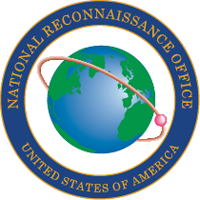 The National Reconnaissance Office designs, builds and operates the nation's reconnaissance satellites. NRO products, provided to an expanding list of customers like the Central Intelligence Agency and the Department of Defense, can warn of potential trouble spots around the world, help plan military operations, and monitor the environment. As part of the Intelligence Community, the NRO plays a primary role in achieving information superiority for the U.S. Government and Armed Forces. A DOD agency, the NRO is staffed by DOD and CIA personnel. It is funded through the National Reconnaissance Program, part of the National Foreign Intelligence Program.
The National Reconnaissance Office designs, builds and operates the nation's reconnaissance satellites. NRO products, provided to an expanding list of customers like the Central Intelligence Agency and the Department of Defense, can warn of potential trouble spots around the world, help plan military operations, and monitor the environment. As part of the Intelligence Community, the NRO plays a primary role in achieving information superiority for the U.S. Government and Armed Forces. A DOD agency, the NRO is staffed by DOD and CIA personnel. It is funded through the National Reconnaissance Program, part of the National Foreign Intelligence Program.
National Security Agency/Central Security Service
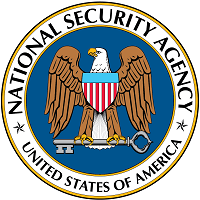 The National Security Agency/Central Security Service is the nation's cryptologic organization that coordinates, directs, and performs highly specialized activities to protect U.S. information systems and to produce foreign signals intelligence information. A high-technology organization, NSA is at the forefront of communications and information technology. NSA is also one of the most important centers of foreign language analysis and research within the U.S. government and is said to be the largest employer of mathematicians in the United States and perhaps the world. Founded in 1952, NSA is part of the Department of Defense and a member of the U.S. Intelligence Community. The Agency supports military customers, national policymakers, and the counterterrorism and counterintelligence communities, as well as key international allies. Its workforce represents an unusual combination of specialties: analysts, engineers, physicists, mathematicians, linguists, computer scientists, researchers, as well as customer relations specialists, security officers, data flow experts, managers, administrative officers and clerical assistants.
The National Security Agency/Central Security Service is the nation's cryptologic organization that coordinates, directs, and performs highly specialized activities to protect U.S. information systems and to produce foreign signals intelligence information. A high-technology organization, NSA is at the forefront of communications and information technology. NSA is also one of the most important centers of foreign language analysis and research within the U.S. government and is said to be the largest employer of mathematicians in the United States and perhaps the world. Founded in 1952, NSA is part of the Department of Defense and a member of the U.S. Intelligence Community. The Agency supports military customers, national policymakers, and the counterterrorism and counterintelligence communities, as well as key international allies. Its workforce represents an unusual combination of specialties: analysts, engineers, physicists, mathematicians, linguists, computer scientists, researchers, as well as customer relations specialists, security officers, data flow experts, managers, administrative officers and clerical assistants.
Navy Intelligence
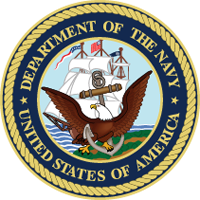 Under the direction of the Director of Naval Intelligence, the U.S. Navy’s intelligence team is the leading provider of maritime intelligence to Navy and joint/combined warfighting forces, as well as national decision makers and other partners/consumers in the U.S. National Intelligence Community. Naval Intelligence is comprised of active duty and reserve military, and civilian personnel, serving at sea and ashore around the world.
Under the direction of the Director of Naval Intelligence, the U.S. Navy’s intelligence team is the leading provider of maritime intelligence to Navy and joint/combined warfighting forces, as well as national decision makers and other partners/consumers in the U.S. National Intelligence Community. Naval Intelligence is comprised of active duty and reserve military, and civilian personnel, serving at sea and ashore around the world.
Space Force Intelligence
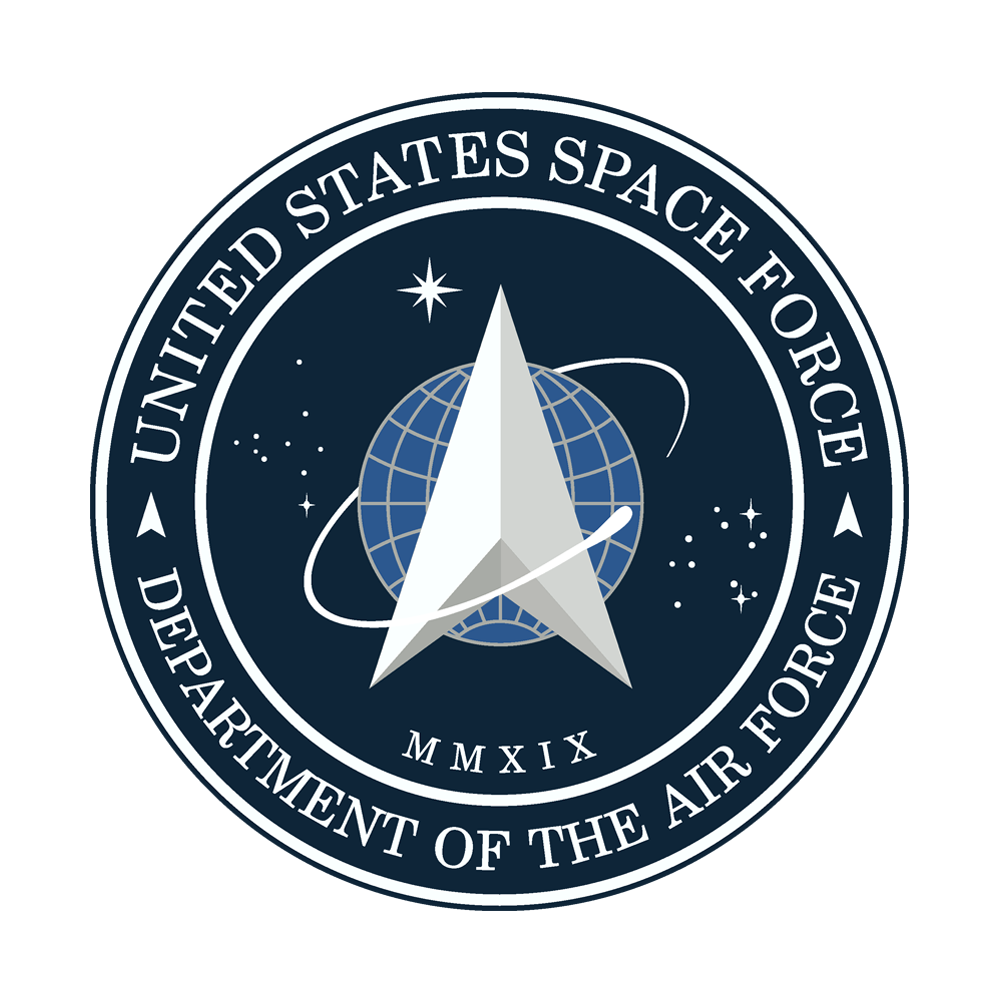 The U.S. Space Force (USSF) is a new branch of the Armed Forces. It was established on December 20, 2019 with enactment of the Fiscal Year 2020 National Defense Authorization Act and will be stood-up over the next 18 months. The USSF was established within the Department of the Air Force, meaning the Secretary of the Air Force has overall responsibility for the USSF, under the guidance and direction of the Secretary of Defense. Additionally, a four-star general known as the Chief of Space Operations (CSO) serves as the senior military member of the USSF.
The U.S. Space Force (USSF) is a new branch of the Armed Forces. It was established on December 20, 2019 with enactment of the Fiscal Year 2020 National Defense Authorization Act and will be stood-up over the next 18 months. The USSF was established within the Department of the Air Force, meaning the Secretary of the Air Force has overall responsibility for the USSF, under the guidance and direction of the Secretary of Defense. Additionally, a four-star general known as the Chief of Space Operations (CSO) serves as the senior military member of the USSF.
Intelligence is information gathered within or outside the U.S. that involves threats to our nation, its people, property, or interests; development, proliferation, or use of weapons of mass destruction; and any other matter bearing on the U.S. national or homeland security. Intelligence can provide insights not available elsewhere that warn of potential threats and opportunities, assess probable outcomes of proposed policy options, provide leadership profiles on foreign officials, and inform official travelers of counterintelligence and security threats.
The U.S. Intelligence Community is a federation of executive branch agencies and organizations that work separately and together to conduct intelligence activities necessary for the conduct of foreign relations and the protection of the national security of the United States. The IC remains focused on the missions of cyber intelligence, counterterrorism, counterproliferation, counterintelligence, and on the threats posed by state and non-state actors challenging U.S. national security and interests worldwide.
Customers
The National Security Act of 1947, as amended, defines the Intelligence Community's customers as:
- The President
- National Security Council
- Heads of Departments and Agencies of the Executive Branch
- Chairman of the Joint Chiefs of Staff and senior military commanders
- Congress
Types of Intelligence
The intelligence cycle is a process of collecting information and developing it into intelligence for use by IC customers. The steps in the process are direction, collection, processing, exploitation, and dissemination.
IC products can either be based on a single type of collection or “all-source,” that is, based upon all available types of collection. IC products also can be produced by one IC element or coordinated with other IC elements, and delivered to IC customers in various formats, including papers, digital media, briefings, maps, graphics, videos, and other distribution methods.
There are six basic intelligence sources, or collection disciplines:
- SIGINT—Signals intelligence is derived from signal intercepts comprising -- however transmitted -- either individually or in combination: all communications intelligence (COMINT), electronic intelligence (ELINT) and foreign instrumentation signals intelligence (FISINT). The National Security Agency is responsible for collecting, processing, and reporting SIGINT. The National SIGINT Committee within NSA advises the Director, NSA, and the DNI on SIGINT policy issues and manages the SIGINT requirements system.
- IMINT—Imagery Intelligence includes representations of objects reproduced electronically or by optical means on film, electronic display devices, or other media. Imagery can be derived from visual photography, radar sensors, and electro-optics. NGA is the manager for all imagery intelligence activities, both classified and unclassified, within the government, including requirements, collection, processing, exploitation, dissemination, archiving, and retrieval.
- MASINT—Measurement and Signature Intelligence is information produced by quantitative and qualitative analysis of physical attributes of targets and events to characterize, locate, and identify them. MASINT exploits a variety of phenomenologies, from a variety of sensors and platforms, to support signature development and analysis, to perform technical analysis, and to detect, characterize, locate and identify targets and events. MASINT is derived from specialized, technically-derived measurements of physical phenomenon intrinsic to an object or event and it includes the use of quantitative signatures to interpret the data. The Director of DIA is both the “Intelligence Community Functional Manager for MASINT” and the “DOD MASINT Manager.” The National MASINT Office (NMO) manages and executes MASINT services of common concern and related activities for the D/DIA in response to National and Department of Defense requirements. If interested in learning more about MASINT, check out the NMO's primer here.
- HUMINT—Human intelligence is derived from human sources. To the public, HUMINT remains synonymous with espionage and clandestine activities; however, most of HUMINT collection is performed by overt collectors such as strategic debriefers and military attaches. It is the oldest method for collecting information, and until the technical revolution of the mid- to late 20th century, it was the primary source of intelligence.
- OSINT—Open-Source Intelligence is publicly available information appearing in print or electronic form including radio, television, newspapers, journals, the Internet, commercial databases, and videos, graphics, and drawings. While open-source collection responsibilities are broadly distributed through the IC, the major collectors are the DNI's Open Source Center (OSC) and the National Air and Space Intelligence Center (NASIC).
- GEOINT—Geospatial Intelligence is the analysis and visual representation of security related activities on the earth. It is produced through an integration of imagery, imagery intelligence, and geospatial information.
The National Intelligence Strategy
 In support of the National Security Strategy, which sets forth national security priorities, the Director of National Intelligence provides the IC with strategic direction for the next four years through the National Intelligence Strategy (NIS). The NIS is a foundational document for the IC and reflects the input from each of the 18 intelligence elements, as it guides the operations, investments, and priorities of the collective.
In support of the National Security Strategy, which sets forth national security priorities, the Director of National Intelligence provides the IC with strategic direction for the next four years through the National Intelligence Strategy (NIS). The NIS is a foundational document for the IC and reflects the input from each of the 18 intelligence elements, as it guides the operations, investments, and priorities of the collective.
The NIS outlines six goals that reflect key elements of the current strategic environment:
- Position the IC for intensifying strategic competition
- Recruit, develop, and retain a talented and diverse workforce that operates as a united community
- Deliver interoperable and innovative solutions at scale
- Diversify, expand, and strengthen partnerships
- Expand IC capabilities and expertise on transnational challenges
- Enhance resilience





